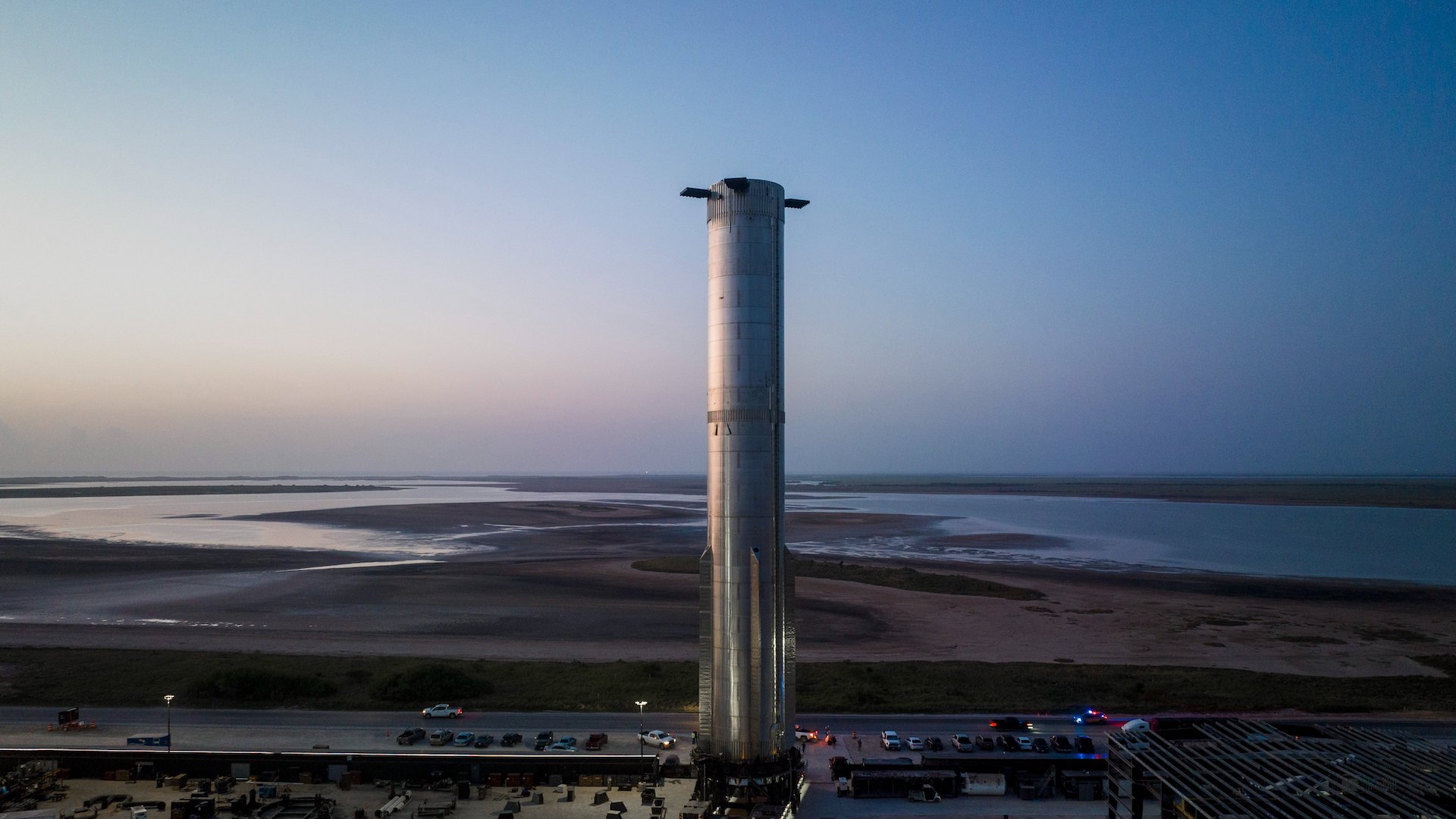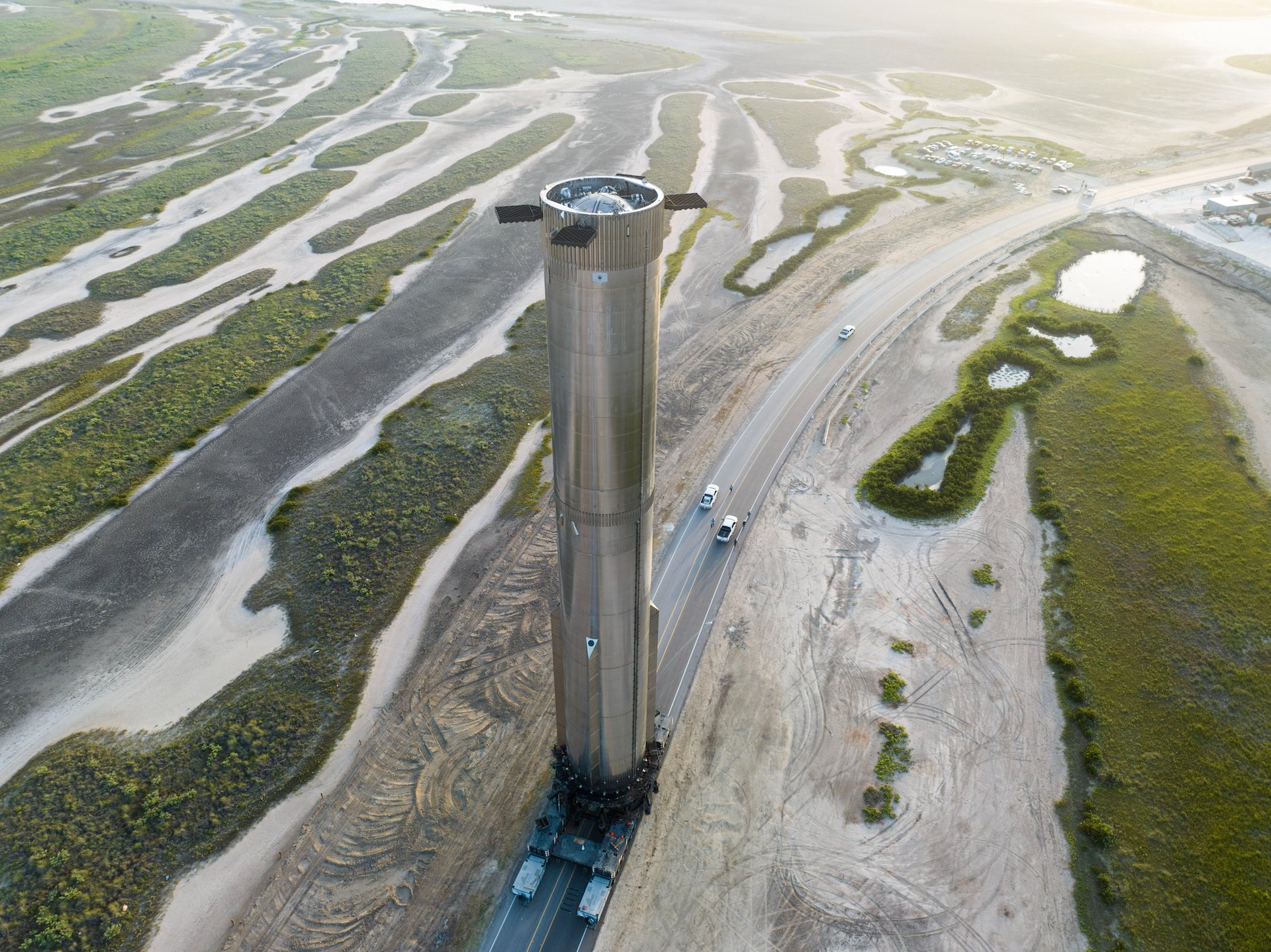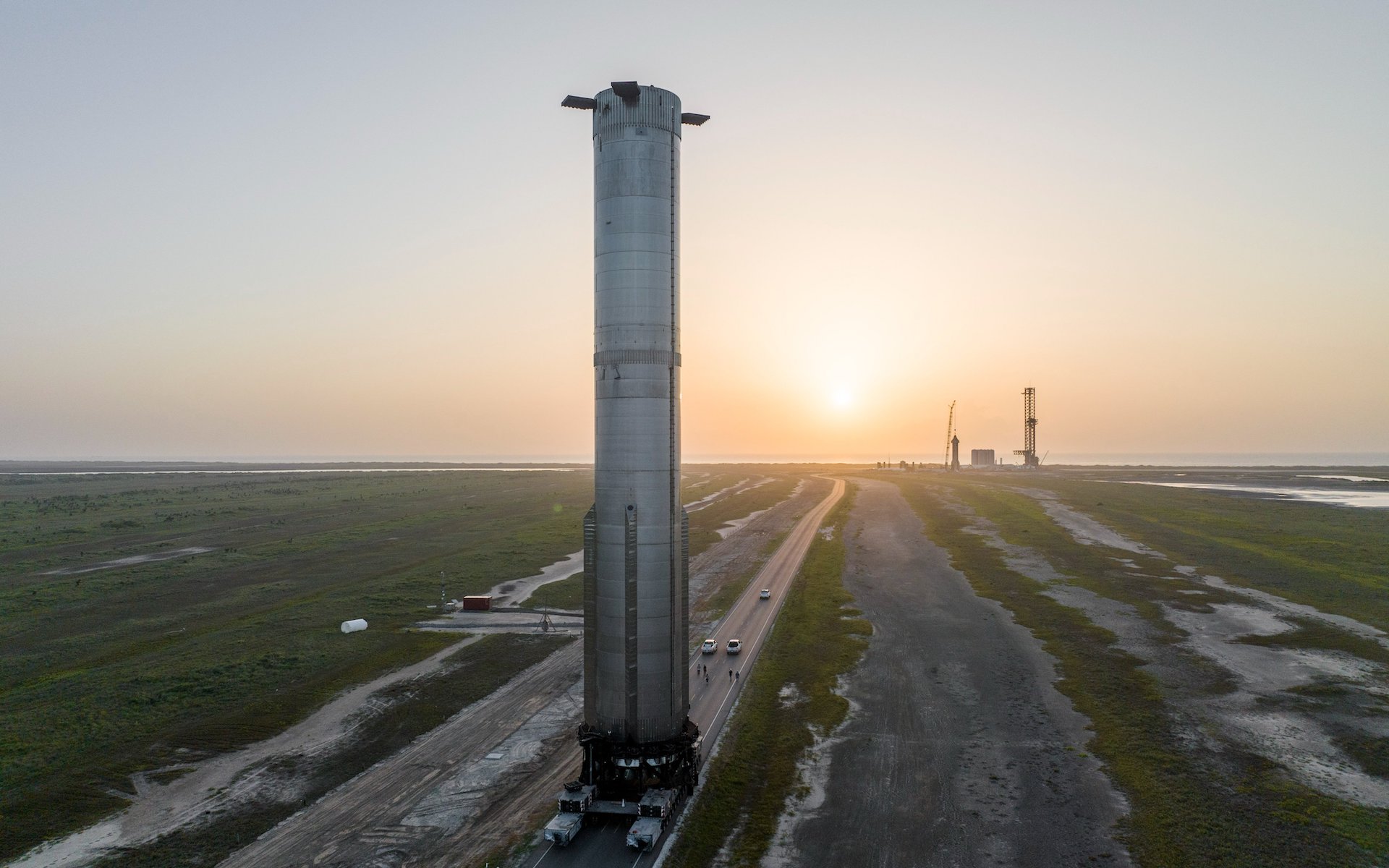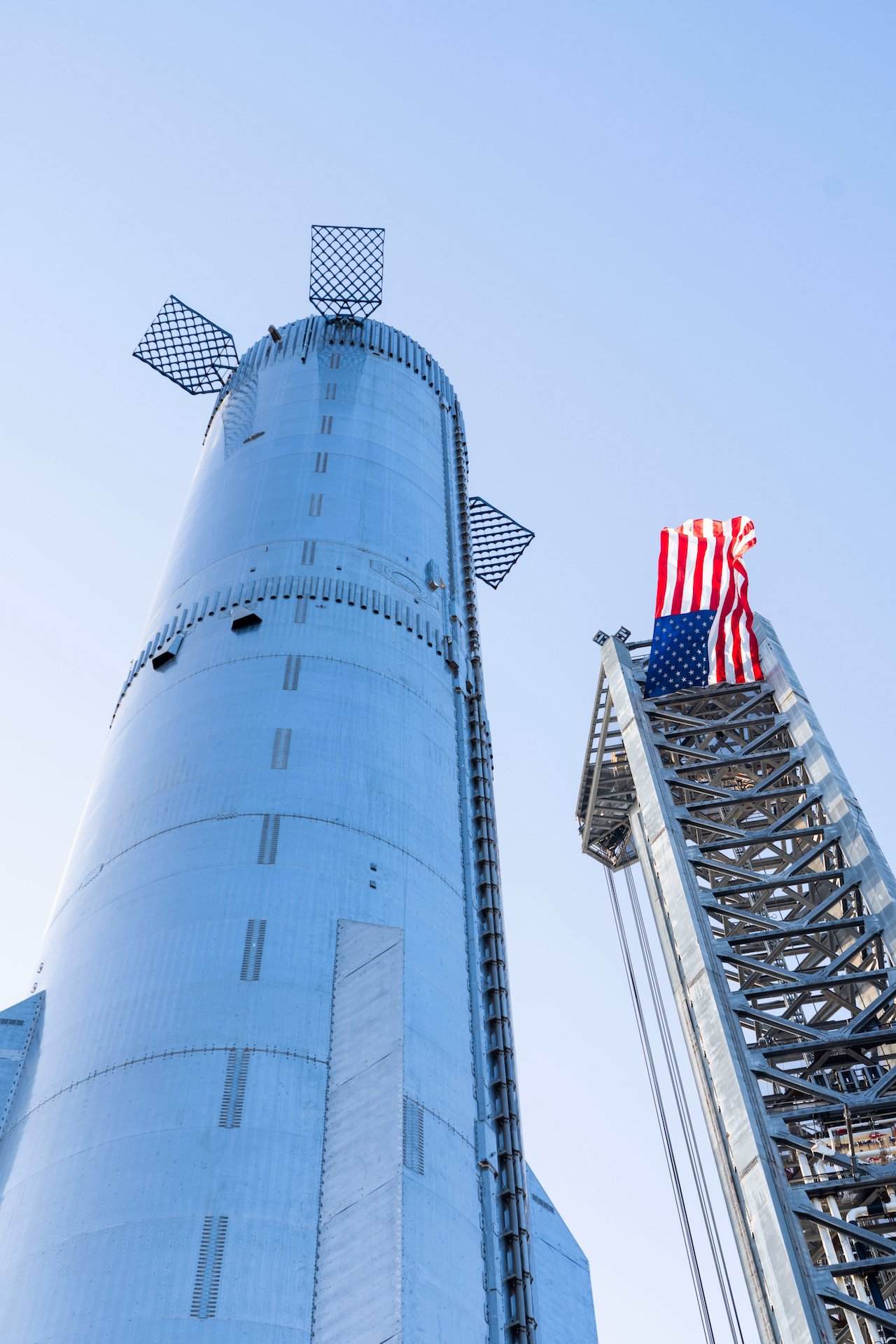
SpaceX just moved the newest prototype of its huge Starship Super Heavy booster to the launch pad for testing ahead of liftoff.
The rocket, known as Booster 9, is the first to return to the orbital launch mount at Starbase, SpaceX's South Texas facility, since Starship's first fully stacked liftoff on April 20.
During that test flight, Starship's upper stage failed to separate from the Super Heavy booster as planned, and SpaceX sent a self-destruct command to the vehicle a few minutes after liftoff. The incredibly powerful rocket also damaged the orbital launch mount at Starbase.
Related: SpaceX, FAA seek to dismiss environmental groups' Starship lawsuit

Since then, SpaceX has been busy repairing and upgrading the launch pad, including adding a steel plate meant to help protect the pad during liftoff. The company now seems confident in moving ahead with next steps toward another orbital launch attempt.
Speculation about when that might be ranges from a few weeks to several months. A month ago, SpaceX CEO Elon Musk tweeted that Starship may launch again in "6 to 8 weeks," a perhaps optimistic timetable that he's given before.

There are also regulatory obstacles the company must consider. A coalition of environmental groups is suing the U.S. Federal Aviation Administration (FAA), claiming the agency didn't properly assess the damage Starship launches could cause to the South Texas ecosystem.

SpaceX tweeted photos of Super Heavy Booster 9's roll to the launch pad on Thursday (July 20) and said the rocket would be undergoing testing leading up to Starship's next test flight.
If those tests are completed without any complications, SpaceX will conduct an engine test firing, followed by integration with the Starship upper stage. That would clear the path to liftoff — provided the regulatory hurdles have been cleared.







